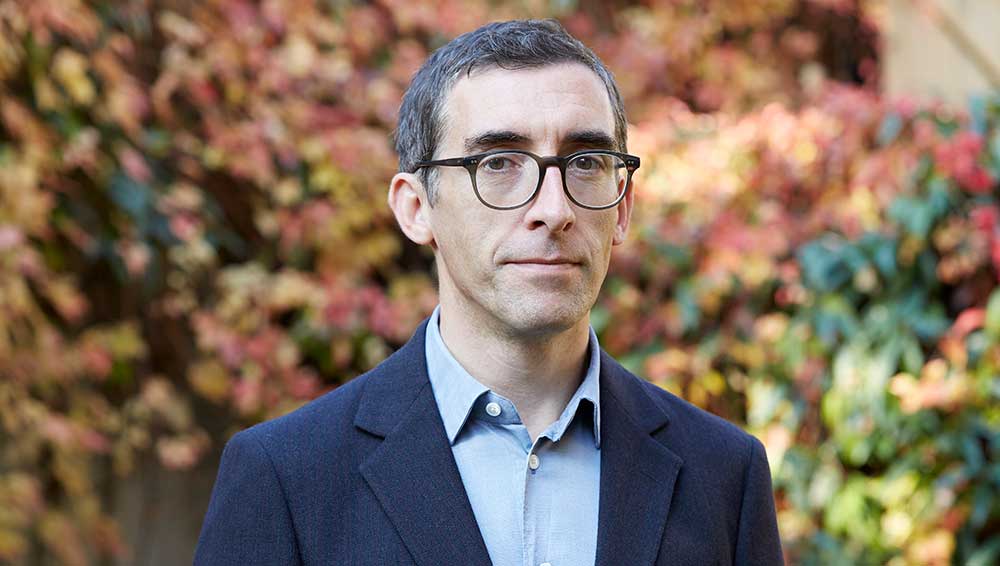
Alex Ely. Photo: Katie Hyams.
by VERONICA SIMPSON
The Stirling Prize is the most treasured of architectural prizes within the UK profession. Awarded annually via a rigorous peer-reviewed selection process steered by the Royal Institute of British Architects, it recognises an outstanding building within a highly competitive field. Established in 1996 in the name of architect James Stirling, since its inception winners have been weighted towards “landmark” or statement projects, usually costing many millions, bankrolled by ambitious cultural or corporate clients, kudos-seeking regional governments or wealthy universities. Not last year. The prize was awarded to Mae Architects’ John Morden Centre (JMC), comprising social, cultural and medical facilities for a low-income retirement community based in an existing residential campus – which includes a building by Sir Christopher Wren - in Greenwich, south London. Sympathetic to the adjacent Wren building and its cloisters, the JMC creates a tranquil, contemporary oasis from timber-lined brick pavilions arranged along a wooden colonnade. Its workshops, arts space, cafe, library and medical centre now form a welcoming, sociable heart to the community, alleviating loneliness and isolation while enriching the experience of the leafy setting with vistas within and across the site.
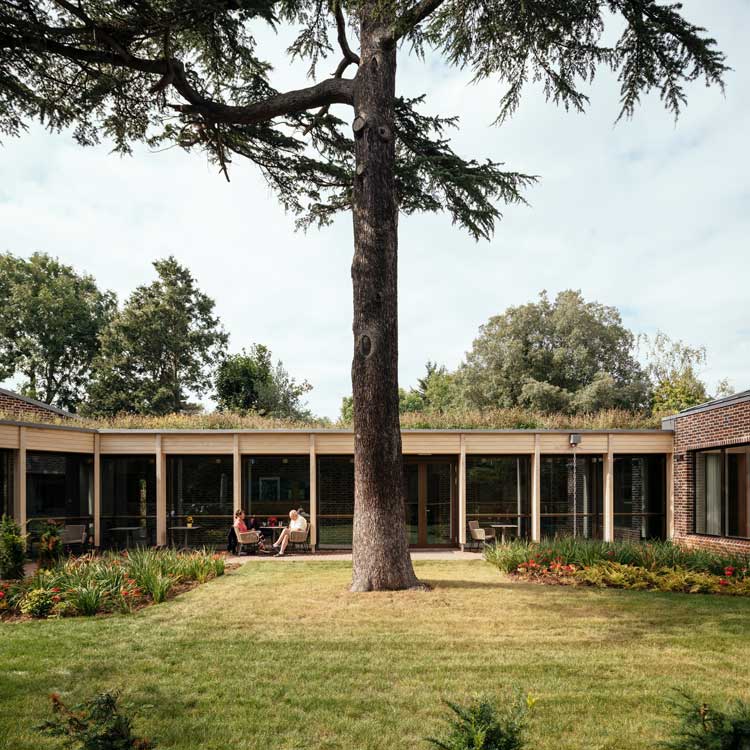
Mae Architects, John Morden Centre, Blackheath, London, 2019-21. Photo: Jim Stephenson.
Speaking on behalf of the RIBA Stirling Prize jury, chair Ellen van Loon of Dutch practice OMA, said: “The John Morden Centre is a place of joy and inspiration. It sensitively and seamlessly integrates medical facilities and social spaces, delivering a bold and hopeful model for the design of health and care centres for the elderly. Creating an environment that lifts the spirits and fosters community is evident at every turn and in every detail.”
The win is perhaps less surprising to those who know the work of the practice, whose architecture is elegant, sensual and sculptural but also intrinsically thoughtful. The firm was shortlisted for the 2022 Stirling Prize for Sands End Arts and Community Centre in west London, also a low-budget facility that knits together two disparate communities with the quality and flexibility of its facilities as well as its welcoming atmosphere.
Founded in 2001 by Alex Ely, Mae Architects has built up a strong reputation for its housing designs as well as the care, creativity and contextual sensitivity of its masterplanning. The latter includes the Phoenix, an ambitious project in Lewes, in the South Downs, which transforms a brownfield site into a sustainable living community, with housing primarily constructed of timber.
Studio International spoke to Ely at Mae’s central London offices.
Veronica Simpson: First of all, congratulations on your Stirling Prize win, which is all the more remarkable for the fact that the John Morden Centre (JMC) is, in essence, quite a modest project intended to improve the lives of a later living community.
Alex Ely: What I really welcome about the recognition, given the history of the Stirling Prize, is that there are very few years where it has recognised projects with a strong social purpose. There was a housing scheme, Goldsmith Street (in 2019, by Mikhail Riches). You could say the Liverpool Everyman Theatre (2014’s win for Haworth Tompkins) might be in the same category. And Hastings Pier (for which dRMM won in 2017). It often does go to the big blockbuster schemes, like the Maxxi (Zaha Hadid’s contemporary art museum in Rome, which won in 2010). But, for me, it’s much less about the individual project. The JMC illustrates a lot of what we care about: building more equitably, doing projects that try to reduce our impact on the environment, responding intelligently and sensitively to their setting, and also projects where we’ve really developed them with the end users in mind. It’s as much a celebration of what we stand for as a practice as it is about the quality of the individual building. I suppose with the JMC there’s a conceptual rigour to the building that would appeal to the jury, a sustainability strength, responding to social need, and accommodating both people in financial hardship and a diversity of end users.
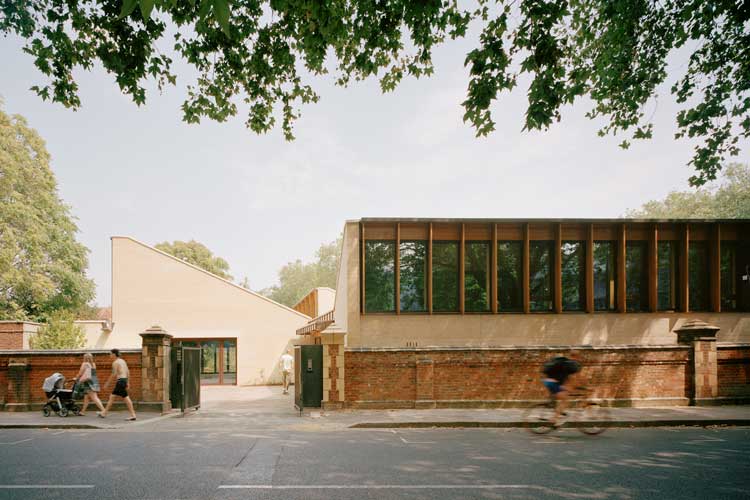
Mae Architects, Sands End Arts & Community Centre, Fulham, London, 2017-20. Photo: Rory Gardiner.
VS: It also says something about your ability to achieve all those worthwhile aims, but also infuse it with that vital quality of delight. You see that here as well as at Sands End Arts and Community Centre, for which you were shortlisted the year before. In both cases, without a big budget, you were able to create something quite special, spatially and materially, but also completely fit for purpose. And that must be deeply satisfying.
AE: At the end of the day, architecture has to be about uplifting the human spirit. We have to create buildings and spaces that are enjoyable to dwell in and spend time in - to connect and form bonds of friendship in, but also attractive to the passer by. With JMC, it’s a much more dynamic building than perhaps comes across in photos. It’s a building that’s spatially quite dramatic. There are shifts in scale and form, connection with the landscape and nature, constantly moving from indoors to out, and constantly having your view and perception shifted as you move through the building.
VS: There’s a charming film about it on your website, where the residents talk about how much more they use the communal areas than before, and how they enjoy the journey to these shared spaces.
AE: That’s right. When architecture gets reduced to circulation and rooms, functional requirements, it loses that ability to be uplifting and delightful to be in. Especially on a building that’s designed to a tight budget, you have to make every space work really hard. So, circulation becomes a joyous experience, you can sit and relax and enjoy the passing of the day, or inclement weather, catch up with friends, a space that immediately draws your eye into the neighbouring spaces. Part of the strength of the building is that there’s a transparency: there are visual clues as to what’s going on, so it encourages residents to take part.
VS: You also had that rare client, especially for a charity, who has seen the value in doing something more visually, socially and environmentally ambitious.
AE: John Morden College is interesting. It was set up in 1695 by Sir John and Susan Morden for destitute seamen who had come back from training overseas, but were impoverished. The original alms house was attributed to Sir Christopher Wren. It has since extended its housing, and now has 300 residents with a huge diversity of gender and background, but they’re all in financial hardship. Often, they come from quite interesting leadership positions and have fallen on hard times or worked for NGOs and they are a very erudite, very engaging and interesting group.
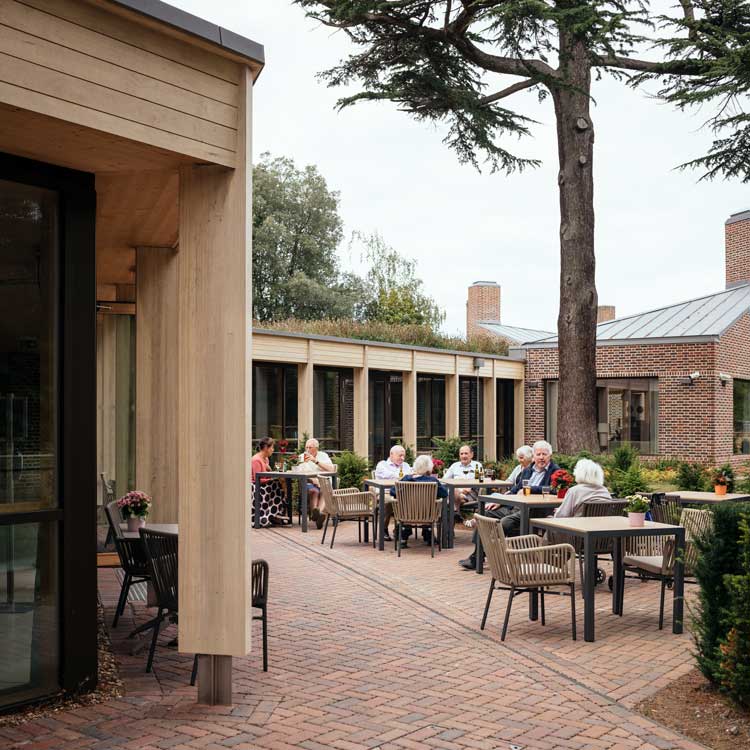
Mae Architects, John Morden Centre, Blackheath, London, 2019-21. Photo: Jim Stephenson.
The chief executive – he’s subsequently retired – had been introduced to a book called The Architecture of Hope (by Charles Jencks, about the Maggie’s cancer caring centres buildings). And suddenly he had his eyes opened to the potential of architecture to really help people thrive and feel connected and strengthen communities, and he recognised that was something lacking in the College. Residents had access to a lounge and dining room, but it wasn’t really serving some of their more cultural or creative and intellectual needs. So, it was inspired by the Maggie’s Centres in that those buildings exemplify how you can create a homely, nurturing, supportive environment for those with cancer. In our case, the residents are at the end of their lives and are in an environment that will be their last home; he wanted to create an environment that would allow the residents to thrive.
The average age is 83, but there are people there in their early 70s. They are a lively bunch, though, while some residents are more active and engaged, there is also a nursing home. There are residents needing round-the-clock care, others who are immobile, but care workers will bring them over to the centre. It does try to cater for the full breadth of residents, including those with dementia and particular frailties, and the visually impaired.
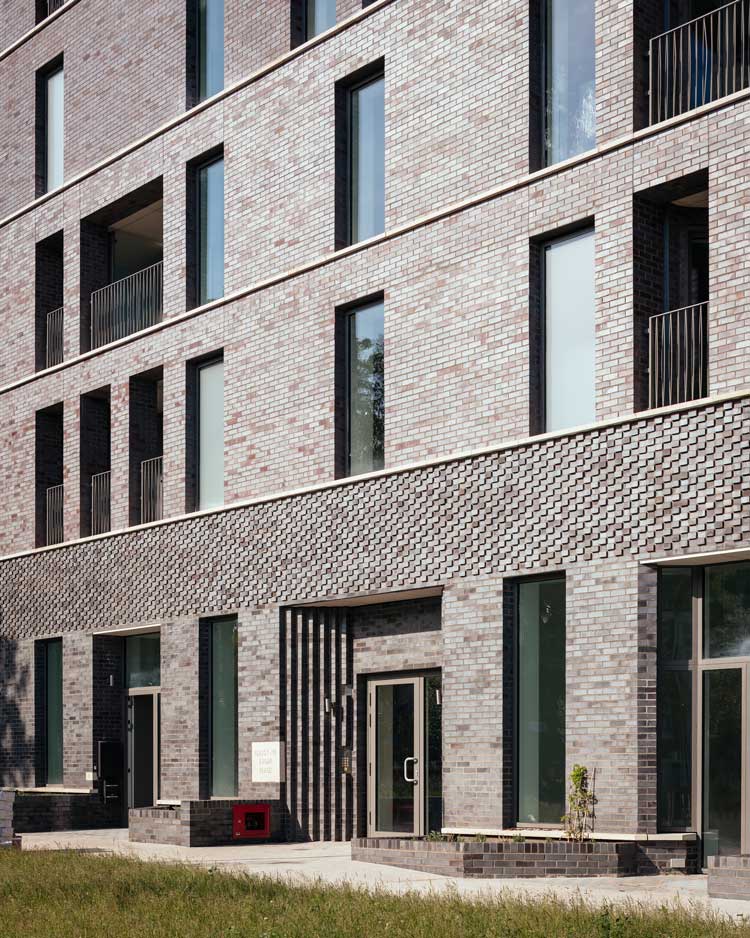
Mae Architects, Agar Grove Estate – Agar Place, London Borough of Camden, 2012-21. Photo: Jim Stephenson.
VS: It must have helped that you started out with a strong track record in housing and later-living accommodation.
AE: We mainly do housing, and we’ve done specialist later-living housing. That’s not to say we don’t rely on or value the specialist knowledge that our clients have, because they are dealing with residents every day and can give us much more insight into their particular needs. There’s really good research and knowledge out there that helps architects design for later living. Demographically we have an ageing population. The cost of care is enormous. Something we’re very interested in is how you can create an environment (that) allows people to live independently for longer and thrive and feel supported. Then we know that it will reduce the cost of care, the cost to the health service, and dealing with those accidents and illnesses that come about through a bad built environment. A very particular one is loneliness, which leads to anxiety and depression. That is more evident in later life. Part of the purpose of the JMC is to alleviate these problems. Many are widowed, or on their own. The majority want to feel part of a community and help improve their mental health and wellbeing.
In all our work in housing, we try to recognise that everything we do can enrich people’s experience and quality of life. So, for example, we’ve done a large housing scheme for Camden council - Agar Grove - which was designed to passivhaus standard. It has very high energy performance. The goal wasn’t just about being environmentally friendly, but also reducing fuel poverty, so it has a strong social agenda. It’s all affordable housing.
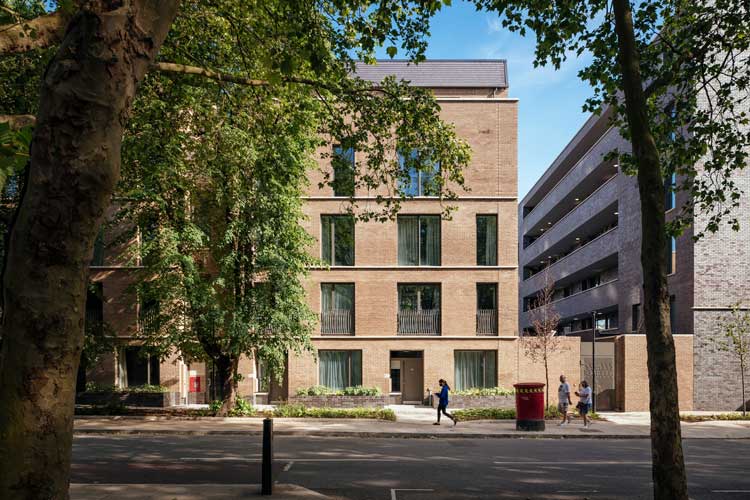
Mae Architects, Agar Grove Estate – Agar Place, London Borough of Camden, 2012-21. Photo: Jim Stephenson.
VS: It takes a certain kind of client to want to make that additional investment.
AE: In that case, Camden council recognised that it is the long-term landowner of those buildings, and it needs to invest in long-term viability. It has declared climate emergency, and is looking at existing stock to reduce environmental impact and energy waste, so it is minded to invest properly. The industry is moving towards those standards anyway. You still need those pioneers and projects to become exemplars.
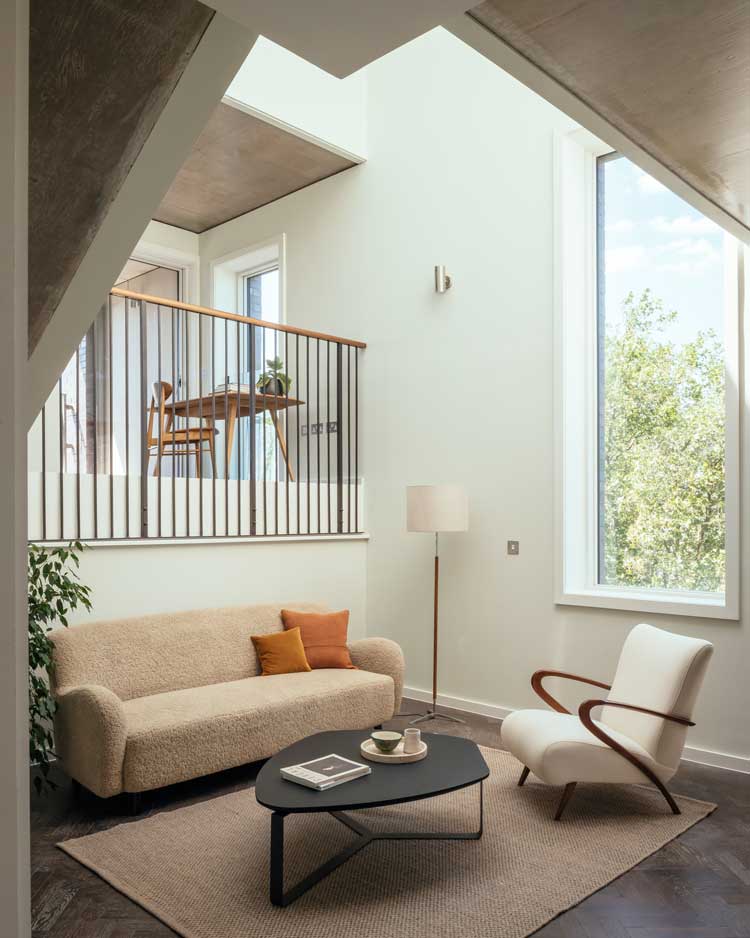
Mae Architects, Agar Grove Estate – Agar Place, London Borough of Camden, 2012-21. Photo: Jim Stephenson.
VS: Where do you think the architecture profession is at when it comes to addressing the problems of sustainability in such a deeply unsustainable industry – the construction industry is said to be responsible for 40% of the world’s carbon emissions.
AE: I was head of sustainable communities, working within CABE [the Commission for Architecture and the Built Environment, a non-departmental public body responsible for advising the UK government on architecture and urban design, which merged into the Design Council in 2011]. And I had the privilege in that role of doing research to understand the broader influences on our built environment beyond what we can control as architects. But we were also working closely with central government, initiating and developing the Building for Life scheme, which helped developers think about their broader placemaking responsibilities. We set out ambitious thinking around urban design and placemaking.
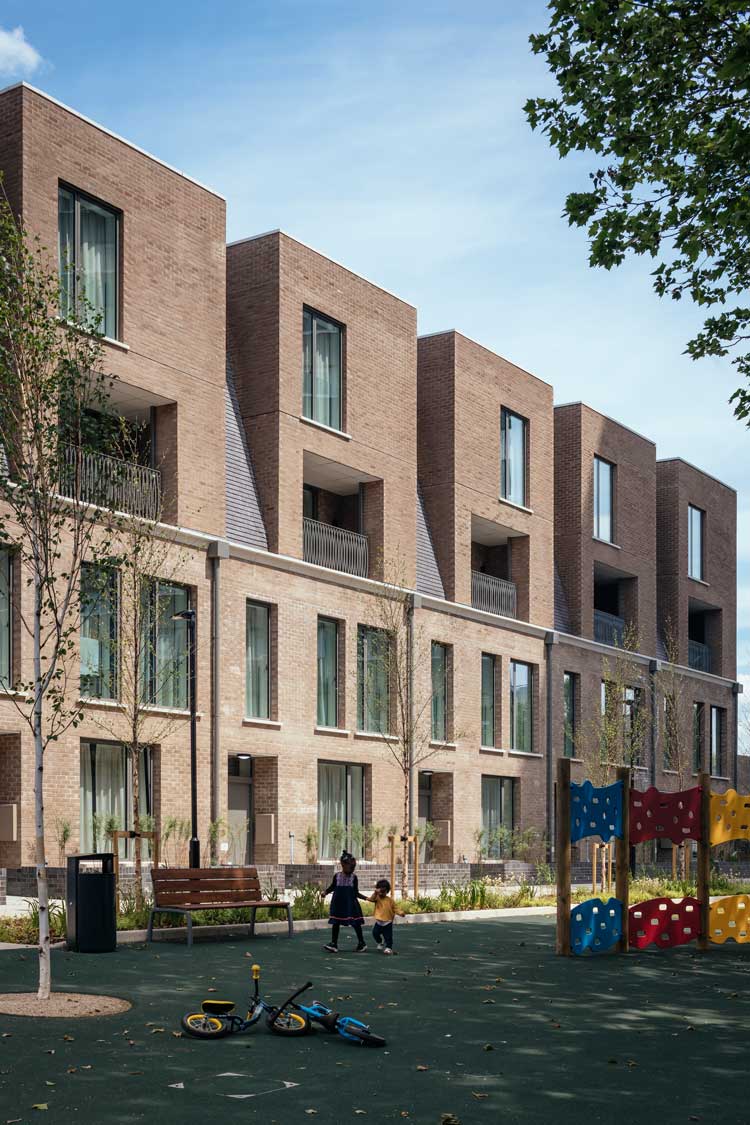
Mae Architects, Agar Grove Estate – Agar Place, London Borough of Camden, 2012-21. Photo: Jim Stephenson.
That time sparked my interest in the fact that architects have agency beyond the buildings we design. So, when I set up Mae in 2001, I was keen that we sustain engagement in the policy debate. I have been a mayor’s design advocate in London, we’ve been commissioned to write best practice guidance. We set the new standards for housing in London. My work has affected way more buildings than the ones we’ve built as a practice. Space standards, daylight standards and quality standards we advocated through the mayor of London have since become national. The reason those are important is that, if people are living in overcrowded accommodation, it affects their mental health, affects children’s performance in school, and leads to stress, anxiety, all these knock-on impacts.
As a practice, we’re very interested in that dialogue between the city and the room – that spanning between the macro and the micro. We probably do as much masterplanning as we do buildings.
VS: A lot of your work is in London. Is that by choice?
AE: We’ve got a large masterplan that we’re working on in Manchester. We’re doing work in Ireland, in Dublin, which is somewhere I’m keen to do more work. There’s a really positive spirit there and a can-do attitude. We’re trying to broaden our horizons. I think the opportunity has always been there for us in London, but we’d love to work internationally. We’ve got skills that could be applied through collaboration, globally, either at a city-making level or at a building level.
VS: There seems to be a more collaborative spirit among UK architectural practices, working with other architects here and abroad.
AE: We see two aspects to that. We have to design in an integrated way. We need those specialisms of engineers, landscape architects, sustainability experts, we value and enjoy those collaborations. But also, when we’re designing an estate regeneration scheme, such as the Meridian Water masterplan [in Enfield, north London], with 10,000 homes, you want a rich mix, a diversity of offer. The Phoenix project in Lewes is also a case in point. We’re creating bits of city. Those modernist ideals that a single hand has the right answer no longer hold true. We want different expressions, different experiences as we go around our neighbourhoods.
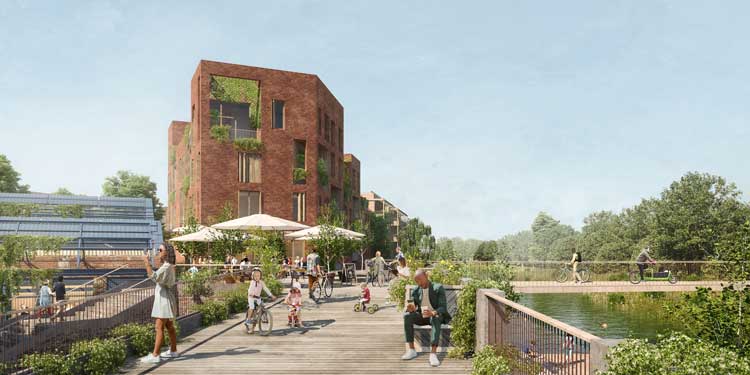
Mae Architects, The Phoenix, Lewes, East Sussex, 2021 - ongoing. Photo courtesy Mae Architects.
VS: Do you feel optimistic about the state of British architecture?
AE: At the moment, it’s a real struggle. The economy has put a hold on progress in the last year. I think there’s an amazing skillset in our industry and knowledge that makes us well placed to help solve some of the biggest problems we’ve got – notably the impact construction has on the environment. We’re working with brilliant consultants, such as Expedition with the Phoenix project, and bringing real insight into broader energy solutions. And there are specialists in timber construction and regenerative architecture, working within the circular economy. That’s something we’re keen to embrace more fully.
VS: What do you mean by regenerative architecture?
AE: Using things such as hemp for insulation, using more natural products that can be regrown. There’s a long way to go and there are obviously materials in buildings that can’t be reused. But we can upcycle more, we can recycle more. With Sands End Arts Centre, we used bricks that were made from waste, so instead of just clay bricks, they upcycled 28 tonnes of ceramic waste that would otherwise have gone to landfill. And there are some really interesting industries emerging that are focusing on taking away some of the waste that we generate and repurposing it. That’s exciting.
VS: Your design for Sands End was also about building social sustainability.
AE: it was a fascinating brief with a local council and a very strong community demanding a new facility in the area. It sits at a real junction between two neighbourhoods, one that is very affluent and one that has a big housing estate and high levels of deprivation. The trustees make sure that it’s affordable, the cafe is subsidised, if the main hall is being hired out, it can be at a very low reasonable rate and it’s open and accessible to everyone. Even if it’s just providing a warm space in winter, those struggling with heating bills can come in and spend time there, without feeling obliged to spend money. It's strategically located, but also very much intended to be a democratic building that is inclusive.
VS: Has that worked the way the community wanted?
AE: Yes, but partly thanks to the drive of the trustees to make sure it works. There’s only so much that architects can control. In this case, it was about creating a gateway and making sure that it feels open and inclusive and connects the park to the residential areas around. But, ultimately, the success of any building is how well it’s used and how well it’s stewarded.
VS: When you were an architectural student could you imagine doing the kind of work you’re doing now? Where did you study?
AE: I studied at the Royal College of Art, which was a really enjoyable environment. There aren’t many architecture schools in art schools. And I did my first degree in Nottingham. I loved it, rubbing up against other disciplines was hugely exciting, I did a lot of collaboration early on with printmakers and photographers, I got to know fine artists and furniture-makers. It’s really interesting to be in that environment where every discipline wants to excel at what they do, in their own creative and artistic way. But I set up Mae fairly soon after college, which was unusual and a bit naive. I didn’t have much experience.
VS: Was it your intention to specialise in housing?
AE: I suppose I’ve always been interested in what makes up the bulk of our built environment, and it’s housing. Sometimes it’s a good background to more signature buildings, cultural landmarks, but other times it can create very special buildings.
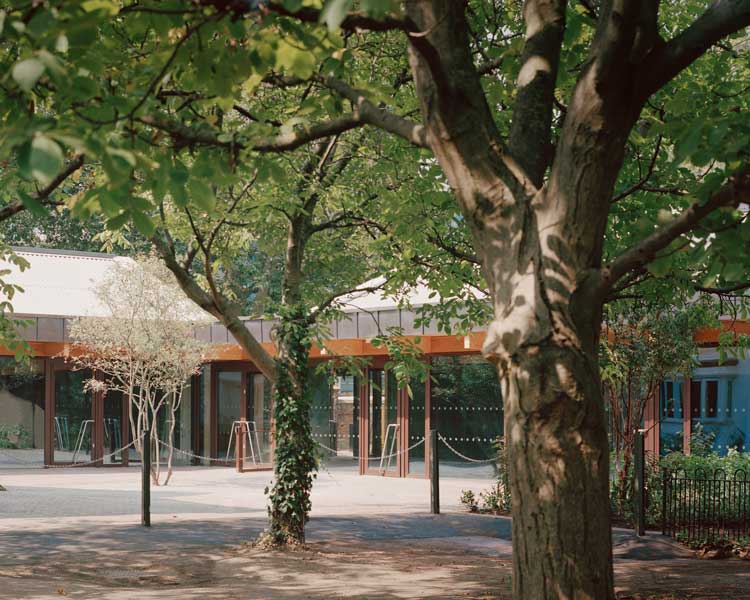
Mae Architects, Sands End Arts & Community Centre, Fulham, London, 2017-20. Photo: Rory Gardiner.
VS: In 2001, when you set up Mae, it was a time when signature or statement buildings were all people talked about, and it seemed like the architect’s signature was more important than making buildings that worked well for their inhabitants.
AE: That was definitely the case. There was probably also a lack of everyday good-quality architecture. Though I’d love to design a Guggenheim, frankly. And John Morden and Sands End are very civic in their qualities and ideas. I think it would lend itself very well, some of that thinking, to cultural projects.
I’m not disinterested in signature architecture, but I suppose the point you’re making about when I set up the practice is what wasn’t being done well is the good-quality background architecture, which is the bread and butter of what we all experience. We need to be doing the everyday better.
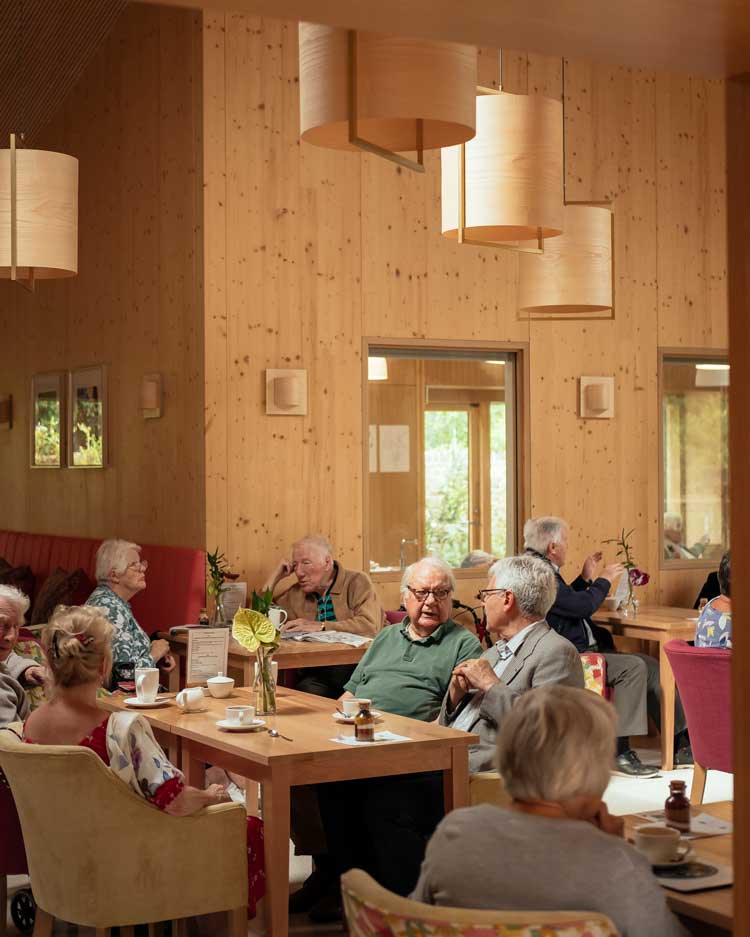
Mae Architects, Sands End Arts & Community Centre, Fulham, London, 2017-20. Photo: Rory Gardiner.
The RCA slightly opened my eyes to this: Nigel Coates, who was professor at the time, made us think much more critically about the role of architects in the city, the fact that buildings aren’t objects, they exist in a context and affect the spaces around them and have a conversation with the city beyond the piece you’re designing. That was my first interest in urban design, and through CABE likewise it broadened my interest between architecture and urbanism.
VS: What sort of architects inspired you, and still do?
AE: I think my ideas and thoughts evolve depending on circumstance. So, when I get involved in policy, I’m inspired by the likes of Parker Morris, who made such an impact on housing when he introduced new space standards (in 1961).
But in terms of buildings and architecture, I probably look at the alternative modernists, like Alvar Aalto or Hans Scharoun. And I’m fascinated by that period of modernism where it still shared some of the social ideals of the hardcore modernists but was more reflective of history, of tectonics and materials, of expression and form. The English parallels are Edwin Lutyens, Philip Webb and Charles Voysey, the Arts and Crafts influence, the wonderful richness to their architecture. And I think there is space in architecture to imagine and reinterpret that world for today. One of my frustrations in the debate and dialogue is there’s often this polarisation between modernism and traditional architecture. That doesn’t mean anything to me. I’m really interested in the space in between. I’m interested in creating work that’s of its time, but that embraces some of the ideals of modernism - the social values it held and ideas about equity and opportunity versus perhaps more traditional Arts and Crafts architecture. I certainly have my architectural heroes, but I’m always inquisitive and open to learning from others.
VS: I had the huge pleasure of visiting Alvar and Aino Aalto’s refurbished Paimio Sanatorium in 2023. It was a game-changer in terms of healthcare buildings.
AE: Aalto is so prolific and created an amazing body of work, from housing to healthcare. This is again the reason I’m interested in where Sands End and JMC might lead to. That approach lends itself to healthcare environments, lends itself to art and cultural environments. JMC has a theatre space, Sands End works for performances, it’s designed for that acoustically. So, we can diversify. If we can just build on those projects, that would be really good.
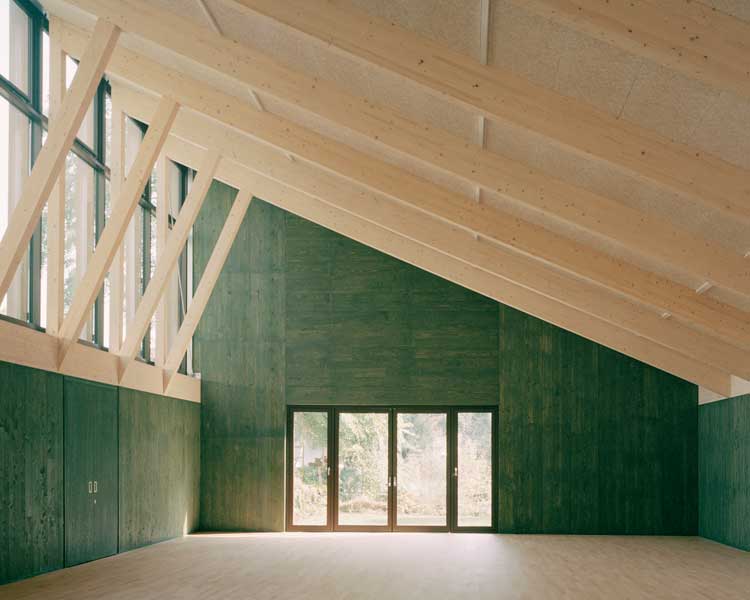
Mae Architects, Sands End Arts & Community Centre, Fulham, London, 2017-20. Photo: Rory Gardiner.
Click on the pictures below to enlarge